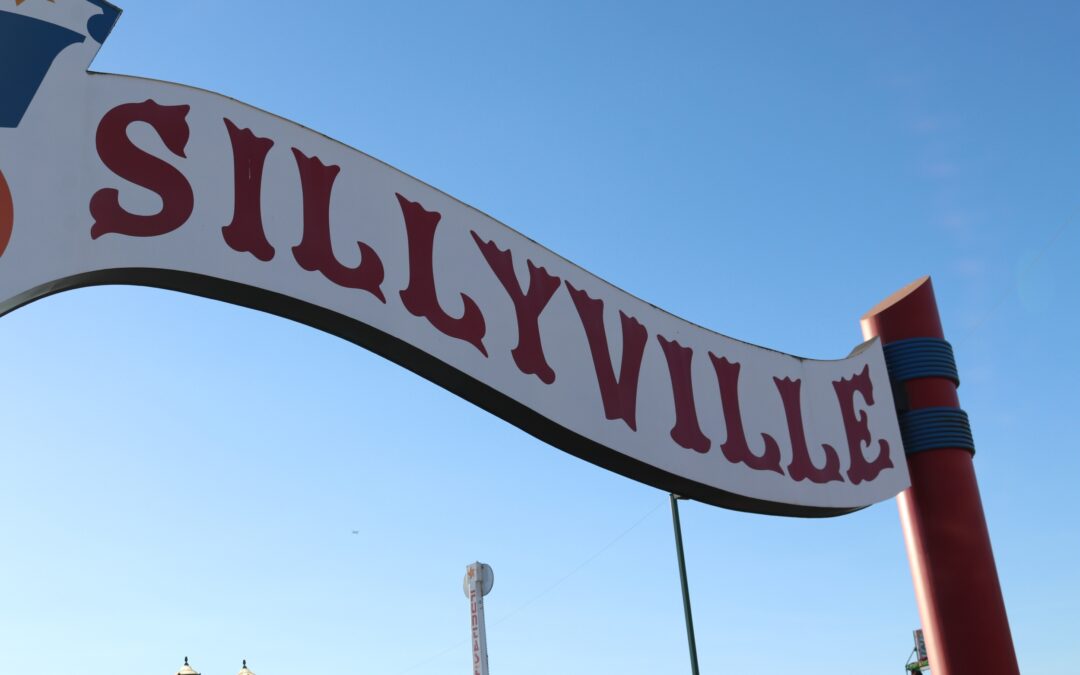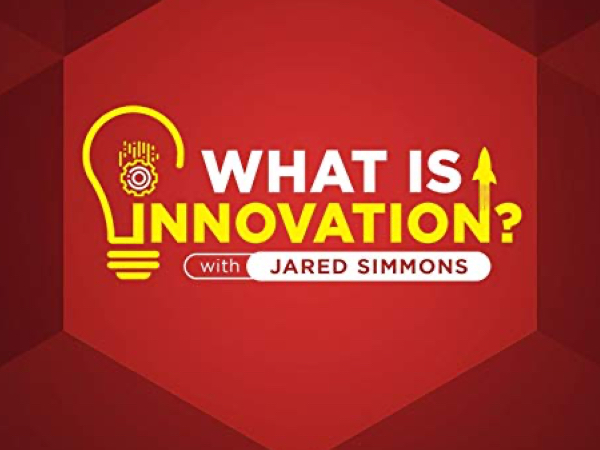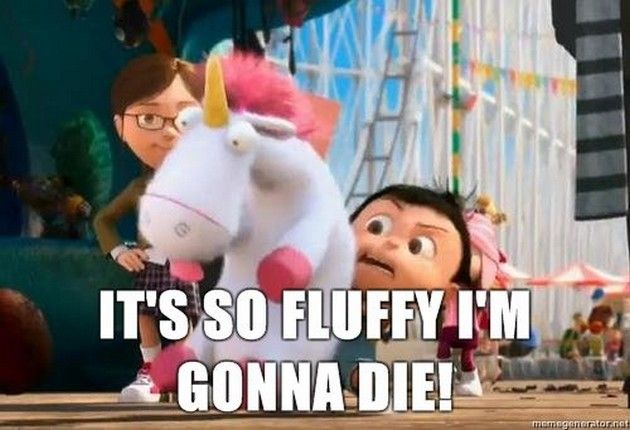
by Robyn Bolton | Dec 30, 2020 | Innovation, Tips, Tricks, & Tools
According to a 2018 survey by NPR and The Marist Poll, the most common New Year’s resolution is to exercise more. Not surprisingly, losing weight and eating a more healthy diet ranked third and further, respectively (“stop smoking” was #2, in case you’re curious).
Hitting the gym to drop weight and build muscle is a great habit to build, but don’t forget about the regular work needed to build other muscles.
Specifically, your innovation muscles.
Innovation mindsets, skills, and behaviors can be learned but if you don’t continuously use them, like muscles, they can weaken and atrophy. That’s why it’s important to create opportunities to flex them.
One of the tools I use with clients who are committed to building innovation as a capability, rather than scheduling it as an event, is QMWD – the Quarterly-Monthly-Weekly-Daily practices required to build and sustain innovation as a habit.
QUARTERLY
Leave the office and talk to at least 3 of your customers
It’s tempting to rely on survey results, research reports, and listening in on customer service calls as a means to understand what your customers truly think and feel. But there’s incredible (and unintended) bias in those results.
Take, for example, this story from former P&G CEO AG Lafley:
One very quick story; I will never forget this. We used to do annual research in the laundry detergent business, and every year consumers would rate the Tide powder cardboard package as excellent; excellent to shop; excellent for opening; excellent in use–on, on, on.
So, probably 27 or 30 years ago, I’m in basements in Tennessee, in Kentucky, doing loads of laundry with women, and after three or four or five of these one-on-one sessions, I’ve realized that not a single woman has opened a box of Tide with her hand. Why not? You’ll break your fingernails!
So, how did they open the box? They had nail files; they had screwdrivers; they had all kinds of things sitting down on the shelf over their washing machine, and yet they thought our package was excellent. And we thought our package was excellent because they were telling us our package was excellent. We had to see it and experience it.
Here’s the problem–consumers cannot really tell us what they want. They can tell you why they like it or why they don’t like it, but they cannot tell you what they want.
Schedule a day each quarter to get out of the office and meet your customers. Ask them what they like and what they don’t. More importantly, watch them use your products and then share what you heard and saw with your colleagues.
MONTHLY
Share with your team a mistake you made and what you learned from it
Silicon Valley mantras like “fail fast” and “fail often” make for great office décor but, let’s be honest, no one likes to fail and very few companies reward it.
Instead of repeating these slogans, reframe them to “learn fast and learn often” and role model the behavior by sharing what you learned from things you did that didn’t go as expected. You’ll build a culture of psychological safety, make smart risks acceptable, and increase your team’s resilience. All things required to innovate in a sustainable, repeatable, and predictable manner.
Do 1 thing just for the fun of it.
In the research that fed into their book, The Innovator’s DNA, professors Jeff Dyer, Hal Gregersen, and Clayton Christensen, found that the most common characteristic amongst the great innovators of our time was their ability to associate – “to make surprising connections across areas of knowledge, industries, even geographies” (page 41). Importantly, their associative thinking skills were fed by one or more “Discovery Skills” – questioning (asking “why,” “why not,” and “what if”), observing, experimenting, and networking.
Fuel your associative thinking ability by doing something NOT related to your job or other obligations. Do something simply because it interests you. You might be surprised where it takes you. After all, Steve Jobs studied calligraphy, meditation, and car design and used all of those experiences in his “day job.”
WEEKLY
Make 1 small change for 1 day
Innovation requires change and, if you’re an innovator, that’s the exciting part. But most people struggle with change, a fact that can be frustrating for change agents.
In order to lead people through change, you need to empathize with them and their struggles which is why you need to create regular moments of change in your work and life. One day each week, make a conscious change – sit on the other side of the conference room table, take a different route to the bathroom, use a black pen instead of a blue one. Even small changes like this can be a bit annoying and they’ll remind you that change isn’t always the fun adventure you think it is.
DAILY
Ask “How can we do this better?”
Innovation is something different that creates value. Which is good news because that means that all it takes to be an Innovator is to DO something DIFFERENT and create VALUE. The easiest way to do that is to find opportunities for improvement.
The next time you’re frustrated with or confused by a process, ask “how can we do this better?” Better can be more simply, faster, cheaper, or even in a way that is more enjoyable but, whatever it means, the answer will point the way to creating value for you, your team, and maybe even your company.
In closing…
Block time on your calendar for these quarterly, monthly, weekly, and daily habits. After all, the best reflection of your priorities are the things in your calendar. And, if you stick with this, you’ll be among the 8% who achieve their New Year’s goals.
Originally published on December 5, 2019 on Forbes.com

by Robyn Bolton | Dec 22, 2020 | Innovation, Leadership, Strategy
“The definition of insanity is repeating the same actions over and over again and expected different results.”
This quote, often (wrongly) attributed to Albert Einstein, is a perfect description of what has been occurring in corporate innovation for the last 20+ years.
In 1997, The Innovator’s Dilemma, put fear in the hearts of executives and ignited interest and investment in innovation across industries, geographies, and disciplines. Since then, millions of articles, thousands of books, and hundreds of consultants (yes, including MileZero) have sprung forth offering help to startups and Fortune 100 companies alike.
Yet the results remain the same.
After decades of incubators, accelerators, innovation teams, corporate venture capital (CVC), growth boards, hackathons, shark tanks, strategies, processes, metrics, and futurists, the success rate of corporate innovation remains stagnant.
Stop the insanity!
I have spent my career in corporate innovation, first as part of the P&G team that launched Swiffer and Swiffer WetJet, later as a Partner at the innovation firm founded by Clayton Christensen, and now as the founder of MileZero, an innovation consulting and coaching firm.
I have engaged in and perpetuated the insanity, but I’ve also noticed something – 90% of what we do in corporate innovation speaks to our logic and reason, it’s left brain focused, and 10% speaks to creativity and imagination, our right brains. BUT 0% of our work speaks to the hearts hopes, fears, beliefs, desires, and motivations of the corporate decision-makers who ultimately determine innovation’s fate.
We spend all out time, effort, and money appealing to their brains when, in reality, the decisions are made in their hearts.
Of course, no corporate executive will ever admit to deciding with their heart, after all, good management is objective and data-based. But corporate executives are also human, and, like other humans, they make decisions with their hearts and justify it with their heads.
Consider this very common scenario:
A CEO announces to investors and employees that “Innovation” is a corporate priority and that the company will be making a “significant” investment in it over the next 3 years. A Chief Innovation Officer is put in place and Innovation Teams start popping up in every Business Unit (BU).
These BU Innovation Teams are staffed with a few people and given budgets in the hundreds of thousands of dollars. They are told to use Design Thinking and Lean Startup methods to create new products or services to better serve existing or new customers.
Each BU team, excited by their new mandate and autonomy, fan out to talk to customers, host brainstorming sessions, and create prototypes. They pull together business cases showing the huge potential of the new product or service and run experiments to prove early market traction. They meet regularly with the BU President and other key decision-makers.
Everything is going perfectly until, about a year into the work, the company has a bad quarter, or the BU is likely to miss expectations, or an innovation experiment delivers worse than expected results.
Suddenly, everyone is a skeptic. Budgets get cut. Team members are re-assigned to “help” other projects. The team’s portfolio shrinks to a single project. And like that – poof – the Innovation Team is gone.
As apocalyptic as that scenario may seem, the numbers back it up. According to research by Innovation Leader, the average tenure of a Chief Innovation Officer is 4.18 years while an Innovation Manager’s tenure is 3.3 years.
What went wrong? The company did everything by the book – they hired the right talent, established dedicated teams with dedicated budgets, talked to customers and created a portfolio of ideas, built prototypes and made small bets.
Innovation is an investment in the future so one bad quarter shouldn’t be its death knell. But it is.
The reason is that executives know that innovation must be invested in today to produce results in the future, but they do not believe that they will be rewarded for prioritizing the future over the present.
This belief then leads to fear about the uncertainty of future returns and the repercussions of failing to deliver the present, which then leads to fear that their career will stall or that they will lose their job, which then spirals into all sorts of other fears until, eventually, the executive feels forced into a “them or me” decision.
They decide with their heart (fear) and justify with their head (bad quarter).
The solution to this is neither simple nor quick but it is effective – we must dedicate as much time and effort to recognizing and addressing the thoughts, feelings, and mindsets (heart) that executives and key decision-makers face in the pursuit of corporate innovation as we spend on the structures, processes, and activities (head) of corporate innovation.
If this sounds like coaching, you’re right. It is. Just as executives benefit from coaching as they take on new and greater responsibility, they also benefit, in the form of increased confidence and better results, when they have coaches guide them through innovation. This is because innovation often requires executives to do the opposite of what they instinctively do when managing the core business.
Innovation is a head AND a heart endeavor, and we need to start approaching it as such.
To do anything less is the definition of insanity.
*** Originally published on on Forbes.com ***

by Robyn Bolton | Dec 15, 2020 | Innovation
“Speed Kills” is as true in innovation as it is on the road.
Although it’s a widely held belief that speed equals success in business, as evidenced by companies’ drive to be first to market and Silicon Valley’s mantra to “Move fast and break things,” there are as many examples of companies that won by moving slow and steady as there are of those that moved fast.
Don’t believe me?
Apple was never first to market in a category.
Facebook was not the first online social network.
WalMart was not the first discount store.
The key to success isn’t doing things quickly, it’s doing the right things rapidly.
This is harder than it sounds to large companies that have internalized the belief that they need to act more like start-ups. In fact, in my work with corporate innovators, also called Intrapreneurs, I often find myself in the strange position of advising them to slow down.
Not slow down to the glacial pace of the core business, of course, And certainly not slow down simply for the sake of it. But to slow down to allow time to learn, explore, and build confidence that they are solving the right problem in the right way for the right people.
The three most common “Innovation Speed Traps,” times when innovators instinctively speed up when they should slow down, happen early in most innovation efforts.
Speed to idea – Everyone loves ideas. They are exciting to create and energizing to pursue. Unfortunately, they’re also a dime a dozen and as evidenced by the percentage of start-ups that fail due to poor product-market fit, no guarantee of market success.
Innovators that start with an idea tend to fall in love with it and pursue it with a single-minded passion that crowds out information and insights that could indicate a pivot or even an entirely new solution is required. This leads to investments of time, money, and energy in an idea that is unlikely to ever achieve market adoption or success.
Speed to MVP – Even more exciting than an idea is when an idea progresses to a prototype and an MVP (minimally viable product).
While a prototype is incredibly helpful in getting customer feedback and refining a solution, focusing solely on the solution (product, service) to the exclusion of other elements of the business model can leave value on the table. Even patented solutions can be easily copied whereas innovations in other parts of the business model, such as the revenue model or key processes, are much harder to copy and scale.
Speed to market testing – Once a business model MVP has been created, many companies then launch it into one or more test markets as a way to gauge its commercial viability. This small-scale testing feels safe because it’s confined to a small portion of the company’s overall market, but it also makes it incredibly difficult to isolate the root cause(s) of unexpected or poor results.
As common as these Innovation Speed Traps are, they’re also easy to avoid.
Slow down to understand the problem then speed to an idea. Successful innovators fall in love with the problem, not the solution. That means that they slow down, talk to customers and stakeholders, and invest time in deeply understanding what the real problem is and why it is a problem.
For example, in the 8-week Intrapreneurship Academy program I teach for high potential managers in the cable industry, participants start the program by identifying a problem that they want to solve during the course but, most of the time, however, they rephrase their ideas into a problem statement. When, in the second week of the course, they take the time to interview customers, they realize that not only was their idea wrong but that they were focused on solving the wrong problem
Slow down to consider the whole business model then speed to an MVP. Once innovators are clear on the problem and confident that it’s the one that customers most need to be solved, they should consider scheduling two brainstorming sessions. The first can focus on creating a solution to the problem and the second is dedicated to discussing and brainstorming sew approaches to other parts of the business model.
Slow down to identify Deal Killer Assumptions then speed to testing – Instead of testing every element of a new solution all at once, innovators should apply the scientific method to the innovation. To do this, innovators brainstorm all of the assumptions they’re making then assess how confident that they are that the assumption is right and the risk to the innovation’s viability if the assumption is wrong. Assumptions where there is low confidence and high negative risk should be tested by a single specific experiment. Once each Deal Killer has been tested, the team’s confidence that the assumption is right is increased, and the negative risk to the solution’s viability is decreased, then innovation teams can progress to integrated tests like test markets.
By slowing down, corporate innovators can speed up and get to real results and lasting change far more efficiently. They just need to remember the word of the late great basketball coach, John Wooden,
“Don’t mistake activity with achievement.”

by Robyn Bolton | Dec 11, 2020 | Podcasts

by Robyn Bolton | Dec 9, 2020 | Innovation, Leadership
Innovating – doing something different that creates value – is hard.
Innovating within a large organization can feel impossible.
In my work with corporate innovators, we always start with great optimism that this time will be different, this time innovation will stick and become the engine that drives lasting growth.
Within weeks, sometimes days, however, we start to be “loved to death,” a practice that takes one of two forms:
- The Protector who says, “That’s not how we do things and, if you insist on doing things that way, you’ll get shut down. Instead, do things this way”
- The Enthusiast who exclaims, “This is amazing! I would love to be involved. And you should share what you’re doing with this person, and definitely tap into this other person’s experience, and I know this third person will want to be involved, and you definitely must talk to….”
Neither mean harm. In fact, they’re trying to help, but if intrapreneurs aren’t careful, The Protector will edit their work into something that is neither different nor value creating, and The Enthusiast will suffocate them with meetings.
4 More Innovation Derailers
Being “loved to death,” is just one of ways I’ve seen corporate innovation efforts get derailed. Here are the others:
Performances for senior executives. Yes, it’s important to meet regularly with senior leaders to keep them apprised of progress, learnings, results, and next steps. But there’s a fine line between updating executives because they’re investors and conference room performances to show off shiny objects and excite executives. It takes time for innovation teams to prepare for meetings (one team I worked with spent over 100 hours preparing for a meeting) which is time they aren’t spending working, learning, and making progress.
Vanity metrics that that feel good. There are well-established metrics of success for existing businesses, but there is no commonly accepted set of innovation metrics because innovation evolves too rapidly and is pursued for countless reasons. As a result, Intrapreneurs are tempted to “game the system” and measure things like site visits and NPS that make executives feel good, but which don’t measure the viability of the innovation in the market.
Inviting everyone to everything. Transparent communication is important in all aspects of business, not just innovation. But just as established businesses choose when, how, and with whom to be transparent so too must corporate innovators. For example, one 100+ person accelerator invited everyone to every meeting and treated all comments as equally important. While this may look and feel egalitarian, it paralyzed teams because they had to respond to every comment, test every suggestion, and defend every decision.
Basing incentives only on the core business’ performance. Despite the mantra to “act like a VC,” it isn’t practical for large organizations to incentivize innovation teams the same way VCs incentivize their staffs or portfolio companies. But the other extreme – using the same incentives with both core business and innovation teams – is equally damaging because it results in the pursuit of “safe” projects and demoralizes intrapreneurs.
As common as these 5 innovation derailers are, they are also easily overcome:
QMWD meetings. Quarterly, Monthly, Weekly, Daily (QMWD) is an incredibly effective planning framework I often use with clients. Here’s how it works:
- Schedule one leadership meeting per Quarter and one per Month.
- Create templates so that teams can quickly fill in blanks, instead of creating presentations from scratch
- Monitor time spent preparing for meetings. If more than one Week (appx 40 hours) is spent preparing for a Quarterly meeting and/or more than one Day (8 hours) is spent preparing for a Monthly meeting, revise the templates, process, and expectations
Evolve what you measure when. According to research by CB Insights, the top two reasons start-ups fail is no market need and they ran out of cash. To avoid this fate, intrapreneurs should always measure desirability, feasibility, and viability and change shift of the three is most important based on where the innovation is in its lifecycle. For example, early innovation metrics should focus on whether there is a need and whether the innovation satisfies it (desirability). As confidence about desirability grows, metrics should shift to focus on the whether the innovation can be made and delivered in a financially attractive way (feasibility) and whether the customer is willing to pay (viability).
Use transparency to build support and let experience drive progress. Innovation teams need to share their learnings with other teams, and they need to be open to feedback and suggestions. Create a specific time and place for that to happen. For example, one of my clients hosts a monthly Lunch & Learn for teams to discuss projects. Outside of that dedicated time, however, empower innovation teams to move quickly because they are closest to the market.
Base incentives on the core business and innovation objectives. It’s important to foster a mentality that “we’re all in this together” amongst core and innovation teams, which is why rewarding intrapreneurs on some elements of the core business’ performance is essential. However, intrapreneurs are not working on the core business and, as a result, their incentives should also reflect what they are working on. Like innovation metrics, there’s no common standard for innovation incentives which is why I encourage my clients to base innovation teams’ incentives on their objectives for the year and to adjust, even fundamentally change, incentives as objectives shift.
Say “Thank You” and move on. As the Protector and the Enthusiast give advice and make connections, remember that they are trying to help, so write down what they say and respond with a genuine “thank you.” Then decide what will be helpful, do it, and ignore the rest. If they follow-up, have another conversation but odds are they won’t because their focus has shifted.
Lots of things derail innovation but, with a little planning and commitment, it’s possible to stay on track and do the “impossible” – innovate in a large organization.
Originally published as “Four Actions that Derail Innovation (And What To Do Instead)” on July 7, 2020 at Forbes.com




